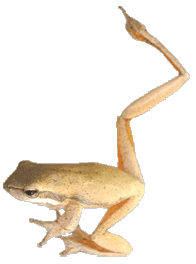What is the Cambrian Period?
 Michael Anissimov
Michael Anissimov
The Cambrian period is a geologic period that extends from 542 to 488 million years ago. For many decades, it was famous for being thought of as the first geologic period to contain multicellular life. Since 1967, however, scientists have determined that multicellular life did exist prior to the Cambrian period (in the Ediacaran period), though most of it was quite simple and non-motile, consisting of fronds and bags with a distinct quilted appearance. Still, the Cambrian era was the first to contain truly complex life -- including the precursors of most modern animal phyla. By contrast, only a few representatives of modern phyla are found in the Ediacaran.
The Cambrian period begins with the appearance of the earliest trilobites and numerous fossils of what is called the small shelly fauna, though some examples of the latter have subsequently been found in the late Ediacaran as well. The small shelly fauna and trilobites are among the earliest hard-bodied animals in the fossil record, and for centuries were the earliest known fossils of multicellular animals. Archaeocyathids ("ancient cups") are another marker of the start of the Cambrian, probable sponges that resemble horn corals. Archaeocyathids were the first reef-builders on the planet, and thrived for about 23 million years until going into a sharp decline 520 million years ago.

As the Cambrian period progressed, many amazing fossils emerge. So many fascinating new organisms appear in such an evolutionarily short time (10-15 million years) that the period has been dubbed the "Cambrian explosion." There is Marella, an odd trilobite-like arthropod; the five-eyed Opabina, with a claw on a stalk protruding from its head; the "spiny slug" Wiwaxia, whose phylum is unknown; early echidnoderms; stem-group crustaceans; the spiny-limbed Kerygmachela with its long cerci; the early jawless fish Myllokunmingia, which is the earliest vertebrate or craniate known; sponge-grazing velvet worms; hyoliths, enigmatic conical shell animals; monoplacophorans, simple one-shelled mollusks; brachiopods, stationary stalked animals that superficially resemble bivalves; and the "King of the Jungle" of the Cambrian period, the huge (for its time -- it was one meter long) "strange shrimp" Anomalocaris with its huge eyes and dual feeding appendages on its head. Before this point, animal life had been quite boring and plain.
The Cambrian is distinctive in that it had a unique class of faunas, sometimes called the "trilobite faunas" that never dominated the Earth again in any era. In the Ordovician period, immediately afterwards, new animals appeared, including more advanced mollusks such as cephalopods, that swept aside the old order. Animals also grew larger; while most animals in the Cambrian were no larger than a few inches in length, foot-long and longer animals became much more common in the Ordovician and subsequent periods.
Another thing the Cambrian period is known for is the first known trace fossils of animals walking on land -- Protichnites and Climatichnites, chevron-shaped tracks up to 6 inches in diameter made either by a large arthropod or slug-like organism. These animals did not likely spend much time on the land, but may have moved over the wet sands by the shore momentarily, to scavenge food particles that would otherwise have been left untouched.
AS FEATURED ON:
AS FEATURED ON:











Discussion Comments
Sup
Post your comments